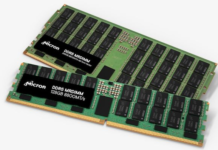
A so-called “brain on a chip” has been created by scientists at the Australian National University (ANU), who used semiconductors to guide the growth of neural tissue into predictable connections.
Scientists behind the research say the discovery might one day be useful in the development of prosthetics that could be used in the brain to substitute or repair the functions of damaged tissue.
Researchers were able to create a “scaffold” on which rat brain cells could grow neural pathways, by using nanowires mounted in a pattern on a semiconductor.
The chip proves the possibility that nanowire scaffolds can be used to guide brain tissue to form functional connections; in theory, something similar could be used to restore damaged brain tissue.
Project leader Dr Vincent Daria said the growth of brain cells posed unique challenges to scientists.
“The brain cells are kind of different because they need to form connections,” he said.
“Whenever you memorise something, it’s actually a connection between one cell and another.
“If you have brain cells, they could probably grow beside each other … but if you don’t have these connections, then it’s not functioning as a circuit.
“We need to have a proper environment where these brain cells are connected, and we can make them talk to each other.”
Applications potentially decades away

Apart from the potential applications in brain prosthetics, the creation also allows scientists to get a close-up look at how the brain works.
“We’re putting [cells] in a platform where we can study them in more detail,” Dr Daria said.
“If we could analyse how these brain cells are connecting to each other, talking to each other, we could probably correlate that to what’s happening inside a brain.”
Dr Daria said observation of the way cells behaved was the primary priorities for researchers.
Applications in brain prosthetics are further off.
“It’s at the fundamentals stage; perhaps [it can be applied] in 15 to 20 years,” he said.
Source: www.abc.net.au

















